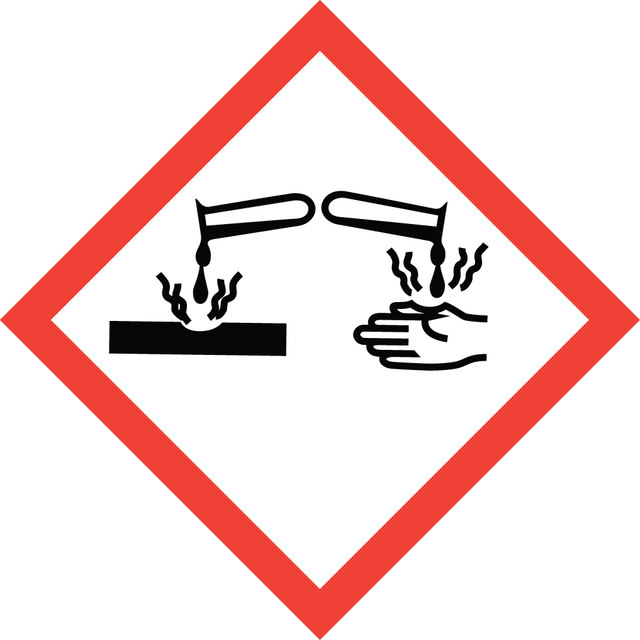252271
α-Bromoisobutyryl bromide
98%
동의어(들):
2-Bromo-2-methylpropionyl bromide, BIBB
로그인조직 및 계약 가격 보기
크기 선택
제품정보 (DICE 배송 시 비용 별도)
Linear Formula:
(CH3)2CBrCOBr
CAS 번호:
Molecular Weight:
229.90
Beilstein:
1746128
EC Number:
MDL number:
UNSPSC 코드:
12352100
PubChem Substance ID:
NACRES:
NA.22
Quality Level
분석
98%
양식
liquid
refractive index
n20/D 1.507 (lit.)
bp
162-164 °C (lit.)
density
1.86 g/mL at 25 °C (lit.)
작용기
acyl bromide
bromo
SMILES string
CC(C)(Br)C(Br)=O
InChI
1S/C4H6Br2O/c1-4(2,6)3(5)7/h1-2H3
InChI key
YOCIJWAHRAJQFT-UHFFFAOYSA-N
유사한 제품을 찾으십니까? 방문 제품 비교 안내
일반 설명
BIBB is an important reagent in the synthesis of amides, macrocyclic amides, ketenes, and alkynic ketones.
애플리케이션
α-Bromoisobutyryl bromide has been used:
- as atom transfer radical polymerization (ATRP) initiator for functionalization of hydroxyl groups present on the surface of graphene oxide
- to form an N-protected halodienamide which provided four- and five-membered lactams in the presence of copper (I) and a tertiary amine
- in preparation of polycaprolactone macroinitiator via reaction with oligomeric caprolactone diol and mesoporous silica nanoparticles with ATRP initiator anchored on the exterior surface
신호어
Danger
유해 및 위험 성명서
Hazard Classifications
Eye Dam. 1 - Skin Corr. 1B
Storage Class Code
8A - Combustible corrosive hazardous materials
WGK
WGK 3
Flash Point (°F)
>230.0 °F
Flash Point (°C)
> 110 °C
개인 보호 장비
Faceshields, Gloves, Goggles, type ABEK (EN14387) respirator filter
Shih-Jer Huang et al.
International journal of nanomedicine, 8, 2011-2027 (2013-06-08)
Cationic polymers are one of the major nonviral gene delivery vectors investigated in the past decade. In this study, we synthesized several cationic copolymers using atom transfer radical polymerization (ATRP) for gene delivery vectors: pluronic F127-poly(dimethylaminoethyl methacrylate) (PF127-pDMAEMA), pluronic F127-poly
Ya'nan Deng et al.
Mikrochimica acta, 185(8), 370-370 (2018-07-11)
Poly(2-naphthyl acrylate) was first grafted onto silica-coated magnetic nanoparticles by surface-initiated atom transfer radical polymerization to prepare a reversed-phase magnetic adsorbent. The resulting polymer brush displays enhanced extraction efficiency by offering active sites on the surfaces of adsorbent. It was
Nicklas N Poulsen et al.
Journal of separation science, 40(3), 779-788 (2016-11-22)
Many bioanalytical methods rely on electrophoretic separation of structurally labile and surface active biomolecules such as proteins and peptides. Often poor separation efficiency is due to surface adsorption processes leading to protein denaturation and surface fouling in the separation channel.
Sun Hwa Lee et al.
Macromolecular rapid communications, 31(3), 281-288 (2010-02-02)
A method for growing polymers directly from the surface of graphene oxide is demonstrated. The technique involves the covalent attachment of an initiator followed by the polymerization of styrene, methyl methacrylate, or butyl acrylate using atom transfer radical polymerization (ATRP).
Andrew J Clark et al.
The Journal of organic chemistry, 72(15), 5923-5926 (2007-07-03)
Reaction of 2-substituted dienamides with catalytic amounts of copper halide/tripyridylamine (TPA) furnishes either 5-exo or 6-endo products with the outcome dependent upon the radical initiating unit. Reaction of 3-substituted dienamides produces beta-lactams via a 4-exo cyclization with termination of the
프로토콜
ARGET ATRP procedure facilitates PMMA polymer brush growth with surface cleaning and initiator monolayer deposition.
Polymerization via ATRP procedures demonstrated by Prof. Dave Haddleton's research group at the University of Warwick.
자사의 과학자팀은 생명 과학, 재료 과학, 화학 합성, 크로마토그래피, 분석 및 기타 많은 영역을 포함한 모든 과학 분야에 경험이 있습니다..
고객지원팀으로 연락바랍니다.